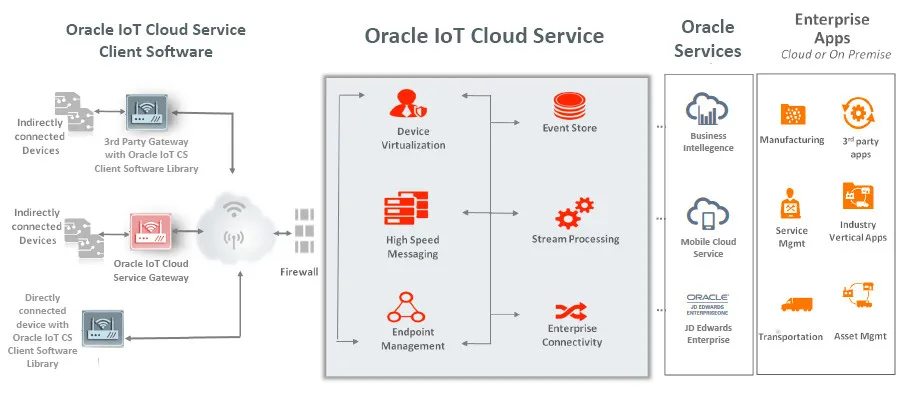Oracle Cloud IOT Enterprise Connectivity
Blog: Capgemini CTO Blog
Within the Oracle Cloud portfolio you will find the Oracle Internet Of Things (IOT) Cloud service. The IOT cloud service from Oracle provides a starting point for developing a IOT strategy within your company. Or, as Oracle likes to state: Oracle Internet of Things (IoT) Cloud Service is a managed Platform as a Service (PaaS) offering that helps you make critical business decisions and strategies by allowing you to connect your devices to the cloud, analyze data and alert messages from those devices in real time, and integrate your data with enterprise applications, web services, or with other Oracle Cloud Services, such as Oracle Business Intelligence Cloud Service.
One of the main pillars within the Oracle IOT strategy, and a right one in my opinion, is that you will have to connect your IOT strategy to your Enterprise Solutions. Connecting them to your enterprise solutions can be for many reasons. For example, integrating it with preventive maintenance and/or customer satisfaction programs… just to name two options.

If you look at the above diagram you will notice that Enterprise Connectivity is placed as a central part of the Oracle IOT Cloud Service.
Oracle IoT Cloud Service provides a secure communication channel for pushing messages to your enterprise applications, and for your enterprise applications to push or pull messages from Oracle IoT Cloud Service. The Oracle IoT Cloud Service Client Software Enterprise Library and REST APIs enable your enterprise applications to send commands to your devices. You can further analyze the device data and alerts sent to Oracle IoT Cloud Service by integrating your IoT application to your enterprise applications, Oracle Business Intelligence Cloud Service, Oracle Mobile Cloud Service, or JD Edwards EnterpriseOne with Internet of Things Orchestrator instances.
REST based API connections
The beauty of connecting an enterprise application with the Oracle IOT Cloud service is that this can be done fully based upon REST API’s exchanging JSON based messages with each other. This means that you can leverage all the API best practices and could leverage all the microservice best practices. Communication will be based upon API’s supported by workflows within the Oracle IOT cloud Service.
Using a combination of stream processing and REST based API’s you can make sure that certain events you receive from connected devices result in a JSON message being send to your enterprise application (or for example, to a user his mobile device who has a mobile APP installed).
Communicating back to the IOT cloud works in the same way, you can have your applications interact with the Oracle IOT Cloud service and, for example, querying device data and metadata, or send commands to devices.
Building a new model
Having the option to connect from and to the Oracle IOT Cloud service in a loosely coupled way using REST API’s makes that complete new models are possible. You will be able to read data coming from connected devices. However, you are also able to directly connect this to processes downstream as well and sending instructions back to devices from the backend systems.
Whenever you are working on a solution which will involve IOT components it might be worth it to have a good look at the Oracle IOT solution as this could potentially bring you a lot of value from day one.